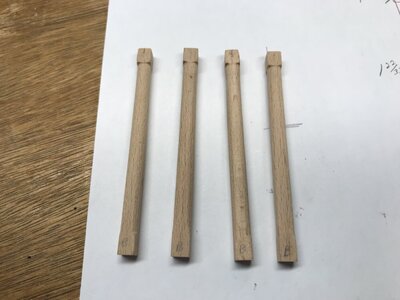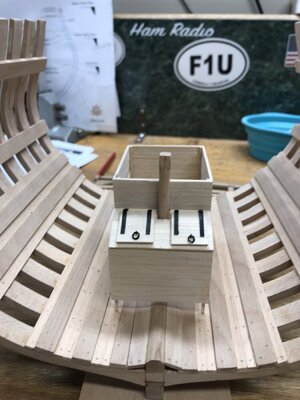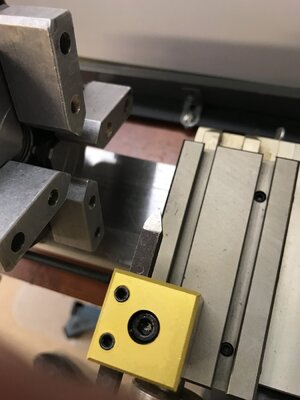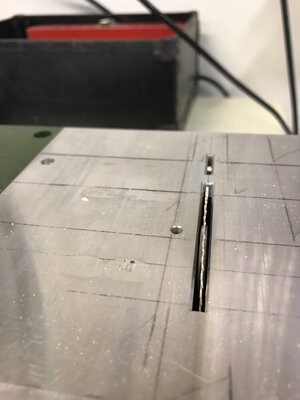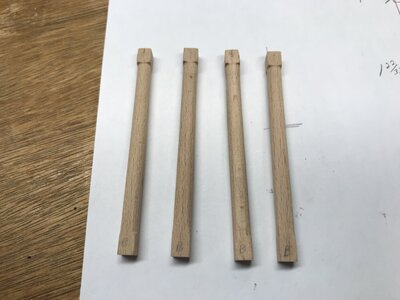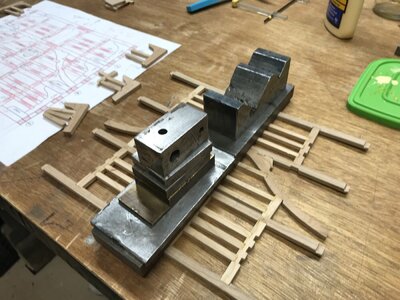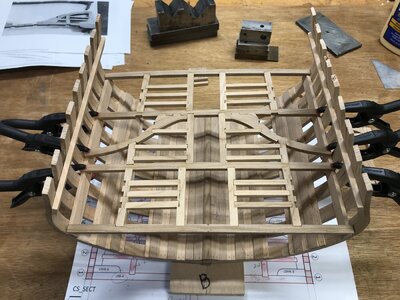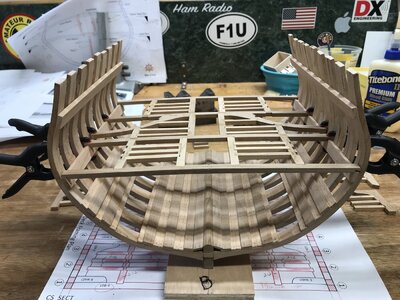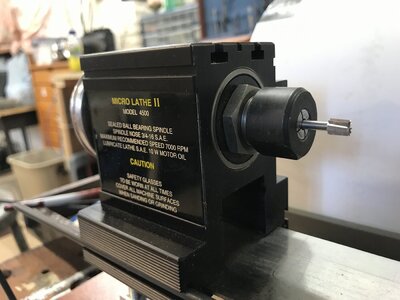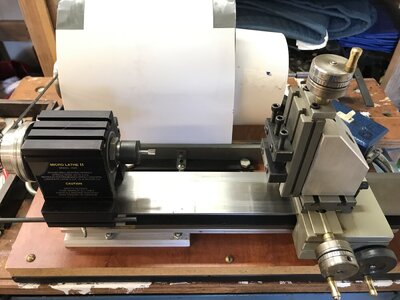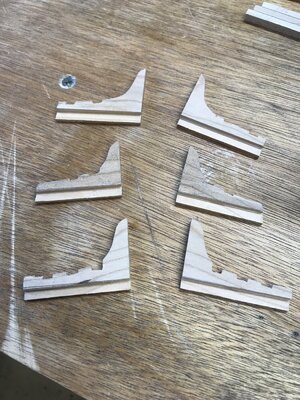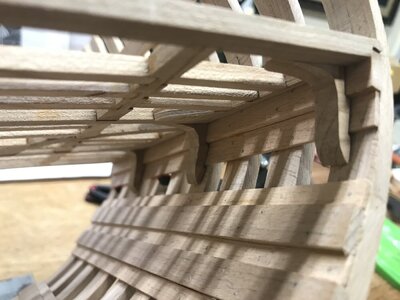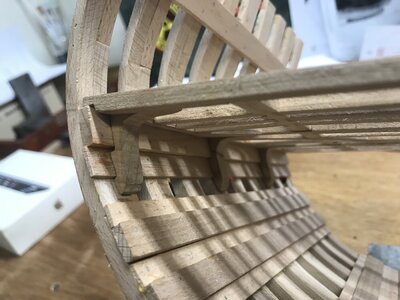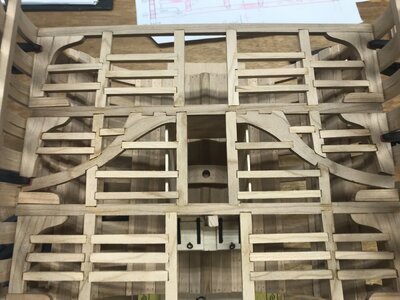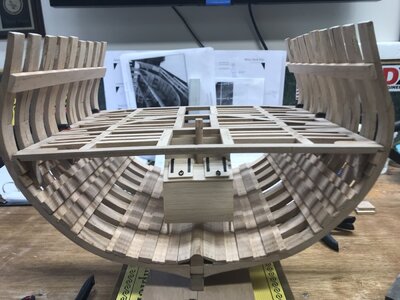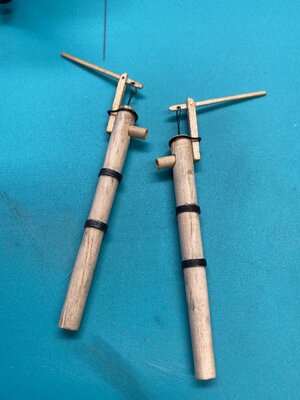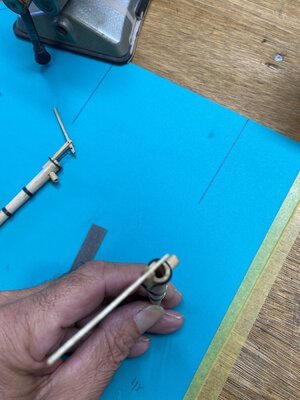- Joined
- Aug 10, 2017
- Messages
- 1,706
- Points
- 538

In the building instructions for part 4 of the build I suggested starting with the beam arms. Making joints in curved surfaces is more difficult than straight butt joints and if the center assembly is a little long or short it is easy to make up the difference at the ends of the section.
All your deck parts look good in the dry fit, you still need to add the main mast partners it is easier to cut the notches before you start the installation.
All your deck parts look good in the dry fit, you still need to add the main mast partners it is easier to cut the notches before you start the installation.




